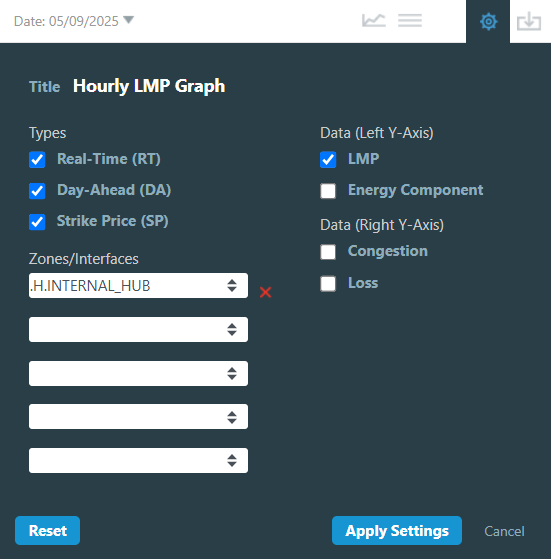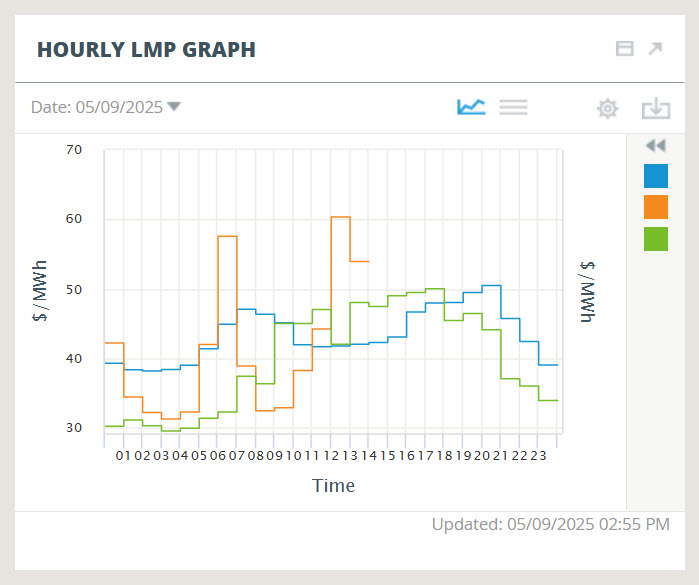Hourly LMP Graph tracks wholesale prices
This is the latest installment in a series highlighting data visualizations created by ISO New England to help explain different aspects of the region’s bulk electric system.
The price of wholesale electricity is in constant flux as variables like consumer demand and fuel costs change over time. One component of the ISO Express data dashboard, the Hourly LMP Graph, tracks these fluctuations using three related values.

LMP stands for locational marginal price. LMPs are calculated at hundreds of points across New England, representing the rates of exchange between buyers and sellers of wholesale electricity.
The graph’s default view displays Hub LMPs, which are representative prices for the entire region. By clicking the gear icon, users may choose to display LMPs for any of the region’s eight load zones and seven import/export interfaces. Users may also choose to display data for the three components of LMPs:
- Energy—the cost of producing the electricity that flows over the region’s transmission system
- Congestion—costs related to constraints on the transmission system that limit the free flow of electricity
- Loss—costs due to the portion of energy lost in transit in the form of heat
The graph’s green line depicts LMPs in the Day-Ahead Energy Market, where energy resources make competitive offers to meet the next day’s expected energy demand. Most energy transactions take place in the day-ahead market, forming the foundation of the next day’s operating plan.

Real-Time Energy Market LMPs reflect actual system conditions, and are depicted by the orange line. The day-ahead and real-time values are often closely aligned, but may differ when unexpected conditions arise, such as higher-than-forecast temperatures or unplanned resource outages.
The blue line is a recent addition to the graph. It represents the strike price, an attribute of the Day-Ahead Ancillary Services Market, which launched in February 2025. The strike price is based on the next day’s expected real-time LMPs and is used in market settlement calculations. Market participants consider the strike price, among other factors, when deciding how to offer their resources for energy, reserves, or other services that support short-term grid reliability.
- Categories
- Inside ISO New England
- Tags
- wholesale prices
